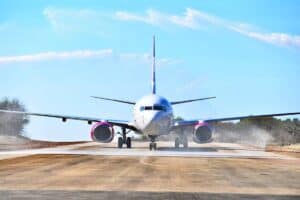Carriers did not have to increase their prices, but simply limit or close off lower-fare classes entirely, or change the number of seats available per price point.

Domestic airlines may have made hay while the sun did not shine on Comair this week after fares rocketed during kulula and British Airways’ (BA) five-day grounding, but the company’s return to flying will see ticket prices calm down from next week.
The Competition Commission warned airlines that should it find lower-fare buckets were actively removed from available capacity and those seats made more expensive, or added to higher-fare levels, it considers it exploitation and it would act.
Nobody had to increase prices or close off entire fare levels, but simply shuffle available inventory, a former airline sales manager told The Citizen. Airlines work on fare classes, or buckets, starting from the lowest fare, increasing incrementally through to full economy or, what the industry calls, Y-class.
In other words, the most expensive fare. These were the R3 000 to R5 000 one-way fares consumers started seeing within hours of Comair stopping flights.
ALSO READ: We’re fine, says Comair
Carriers did not have to up their prices, but simply limit or close off lower-fare classes entirely or change the number of seats available per price point, therefore circumventing the argument made by the Competition Commission.
This way, the former sales manager said, systems could be manipulated to collect more revenue subtly, while airlines could claim no pricing amendments and blame demand-side pressure on inventory. According to the former sales manager, airlines typically deploy around 14-26 fare classes.
FlySafair’s Kirby Gordon confirmed that the low-cost airline uses 23. Lift uses 16 fare classes for economy and four for business class.
Lift chief executive Jonathan Ayache said: “Fare classes are adjusted automatically as flights fill up, which is how it normally works. The difference this weekend was how quickly they filled up due to the spike in demand.”
Gordon said that Flysafair did not shuffle fare classes and related capacity around to profit. At the start of the pricing debate, Lift boss Jonathan Ayache said that Lift’s pricing model remained the same during the period and they did not increase their price brackets.
FlySafair and South African Airways issued statements this week saying that additional capacity was added to their schedules to satisfy demand. Airlink said a few extra flights had been added and Lift increased frequency by 20 flights this week.
Between Comair’s Kulula and BA brands, the company held 40% of airline market share. A rapid exit of so many seats from the market could create a perfect demand-side storm.
Meanwhile, Comair yesterday published fares that South Africans are more used to, with a kulula flight between Johannesburg and Cape Town priced at about R1 500.
Comair’s suspension was lifted on Wednesday night by the SA Civil Aviation Authority.






